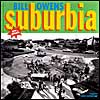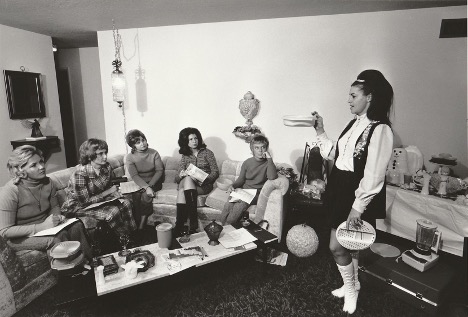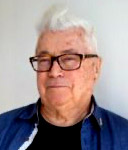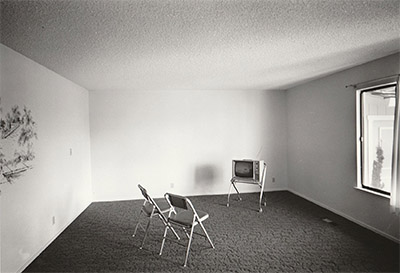PDNB Gallery in Dallas showcases classic images of late ’60s SUBURBIA by Bill Owens (Jamaica)
The photographer captured a fleeting cultural moment with his seminal 1973 book.

Bill Owens’ “Reagan on TV” is on display as part of the “Suburbia” exhibition at Photographs Do Not Bend Gallery through Feb. 12. (Courtesy of PDNB Gallery, Dallas)(Bill Owens)
By Danielle Avram of the Dallas News
The year 1968 was a tumultuous time in American history. The country was embroiled in riots and protests over the escalating U.S. involvement in the Vietnam War, and the assassinations of Martin Luther King Jr. and Robert Kennedy. Progress achieved by the landmark passing of the Civil Rights Act was clouded by the election of Richard Nixon and the lingering segregationist sentiments spurred on by politicians such as George Wallace.
For Bill Owens, 1968 also proved to be a pivotal year. After years abroad in the Peace Corps, Owens (Jamaica 1964-66) had relocated to Livermore, Calif., a former agrarian community-turned-suburb of San Francisco, to work as a photojournalist for the local newspaper.
 Struck by his newfound suburban lifestyle, particularly the young ages and outlooks of its residents, Owens spent a year documenting his surroundings. The resulting book, Suburbia, first published in 1973, became a seminal work of 20th century photography. Prints from the portfolio are currently on view at Photographs Do Not Bend Gallery.
Struck by his newfound suburban lifestyle, particularly the young ages and outlooks of its residents, Owens spent a year documenting his surroundings. The resulting book, Suburbia, first published in 1973, became a seminal work of 20th century photography. Prints from the portfolio are currently on view at Photographs Do Not Bend Gallery.
Armed with a shooting script, Owens often photographed a particular situation multiple times with different subjects until he got the shot he wanted. Adhering to the practice of the “decisive moment” espoused by famed photographer Henri Cartier-Bresson, Owens steadfastly maintained his fly-on-the-wall status so as not to disrupt the natural flow of a scene.

Bill Owens’ “Tupperware Party” captures a moment in suburban Livermore, Calif., in 1968. (Courtesy of PDNB Gallery, Dallas)(Bill Owens)
“As a photographer, most of the time you want to be invisible,” he said during a recent interview with PDNB director Burt Finger.

Bill Owens released one of the seminal works of 20th century photography with his 1973 book “Suburbia.”(Nan Coulter / Special Contributor)
Owens was also influenced by documentarians Bruce Davidson and Danny Lyon, both of whom gained recognition in the 1960s and ’70s for immersing themselves in countercultural lifestyles and civil rights activism. While Owens’ subject matter is a far cry from the gritty freneticism depicted by Davidson and Lyon, his images are biting and unblinking. He’s not drafting a love letter to the suburbs, nor raking its denizens across the coals. He is simply capturing suburban life point-blank, as it unfolds.
A unique aspect of Suburbia is the inclusion of deadpan quotes from the subjects, included alongside each image. They range from the obvious: Two teenage girls declaring, “There’s nothing to do in suburbia”; to the unexpectedly emotional: “How can I worry about the damned dishes when there are children dying in Vietnam,” says a mother holding a baby; to the intuitive and slightly sinister: “I find a sense of freedom in the suburbs. … You assume the mask of suburbia for outward appearances, and yet no one knows what you really do,” explain a couple sitting under a large painting of paper dolls.
The combination of Owens’ influences, images and quotes yields a project that treads the line between community narrative and social commentary. For every family with two young kids, there is a hot tub full of rowdy middle-agers or newlyweds who have almost no furniture or sex-positive couples with mirrored bedrooms. These are not the squeaky-clean folks of the 1950s, nor the disaffected families of the late 1970s, but people living in somewhat of a limbo — a space far enough removed from the chaos of the city so as to feel like a fresh start, but still enveloped in the world-weariness of the time.
The suburbs are at once aspirational and transitory, a sentiment evidenced by Owens’ photograph of a room devoid of anything but two folding chairs and a television. It’s a place full of potential while also a space for making do for, and living in, the moment.

Bill Owens’ “Empty room with 2 chairs” captures the transitory nature of suburban living for many residents. (Courtesy of PDNB Gallery, Dallas)(Bill Owens)
•
“Bill Owens: Suburbia” runs through Feb. 12 at Photographs Do Not Bend Gallery, 150 Manufacturing St., Suite 203, Dallas. Tuesday through Saturday from 11 a.m. to 5 p.m. Free. For more information, visit pdnbgallery.com or call 214-969-1852.
Definitely a blast from the past. I’ll share with some friends I have in Dallas.
In the early 70’s we dealt with similar concerns (Vietnam)–I was in Crested Butte, CO and wrote an article about a very different “suburbia” (the classic rock/drug culture)..
Mark